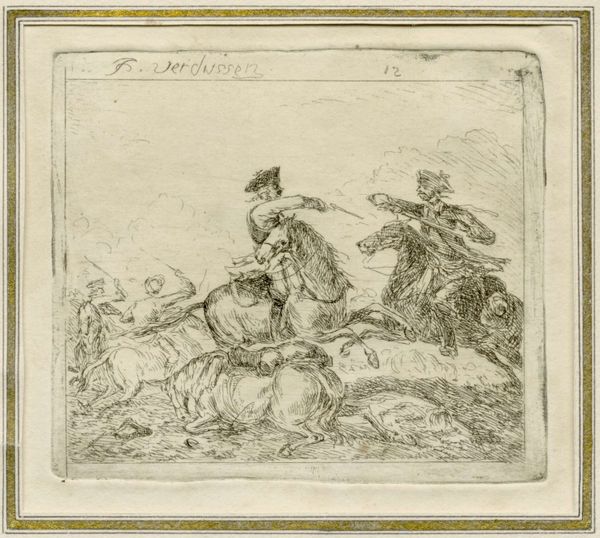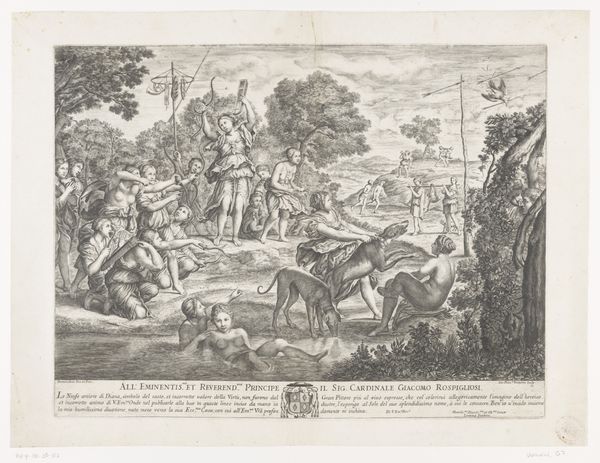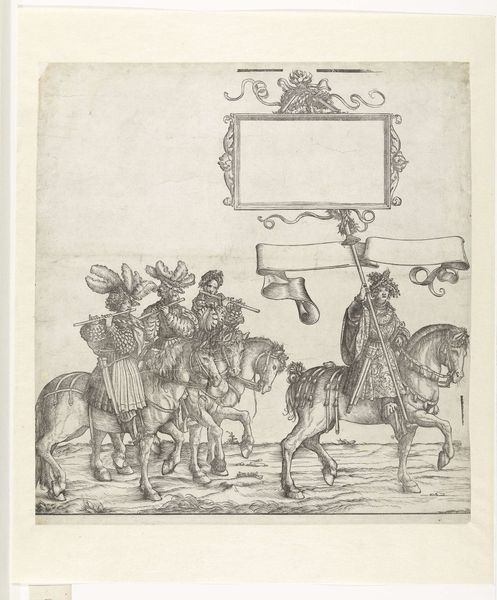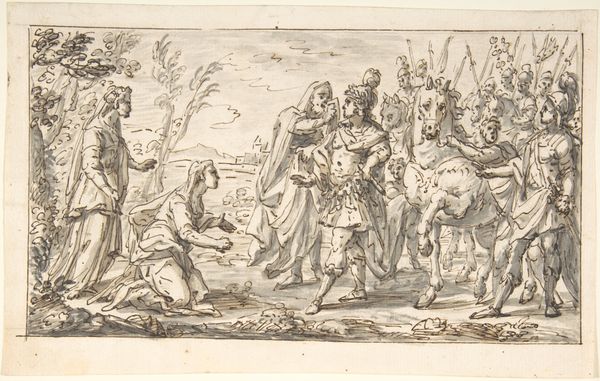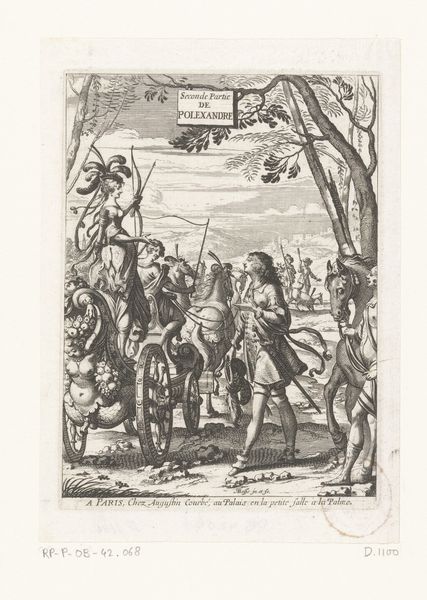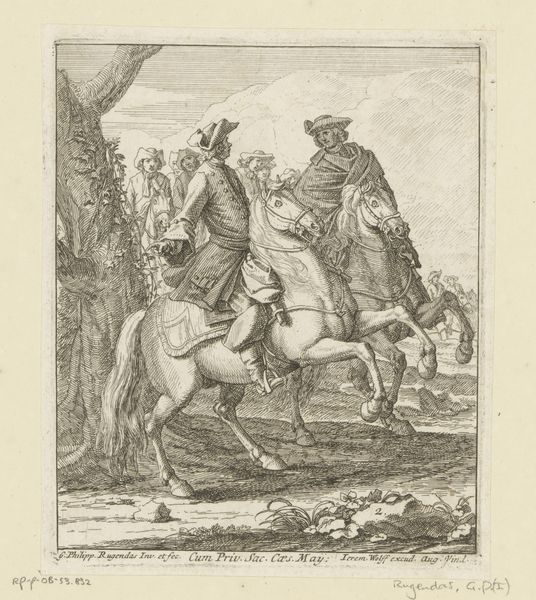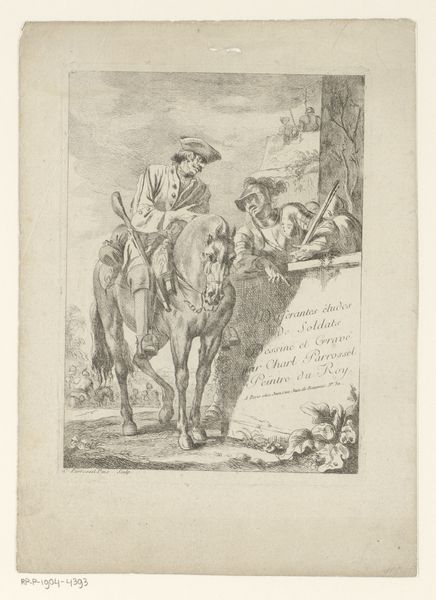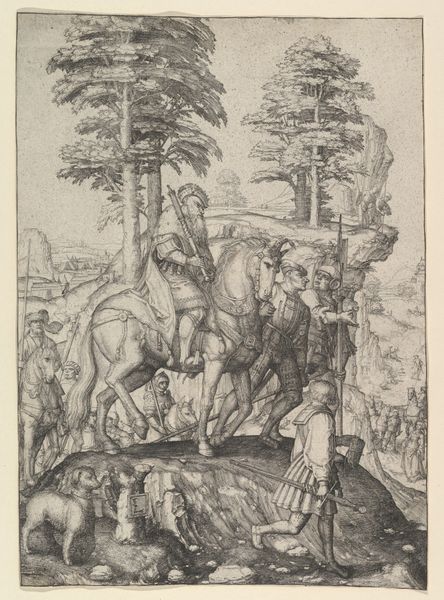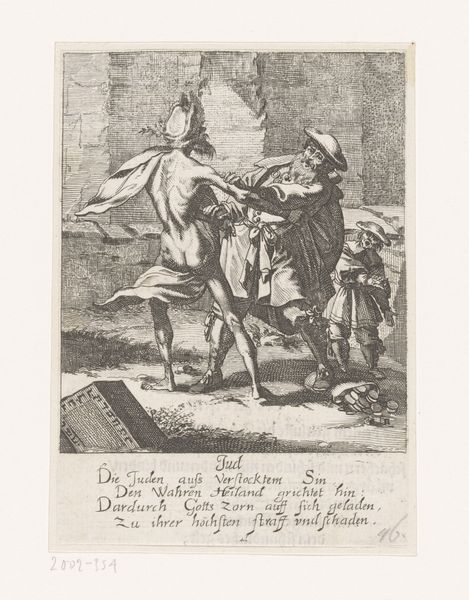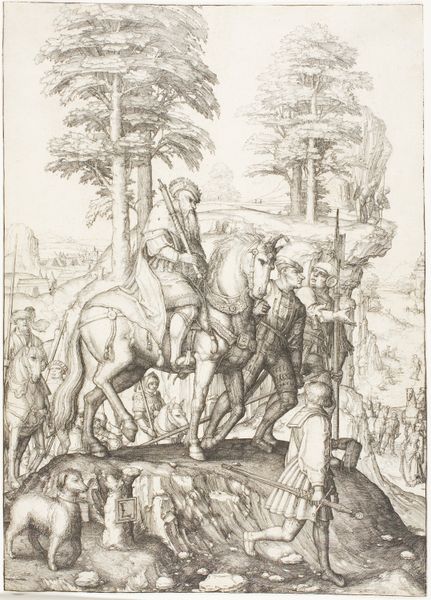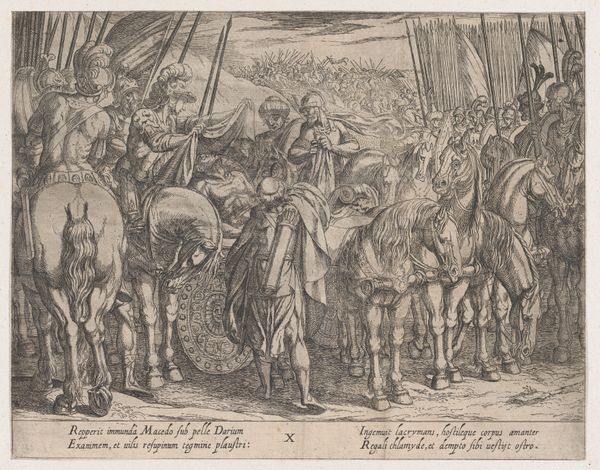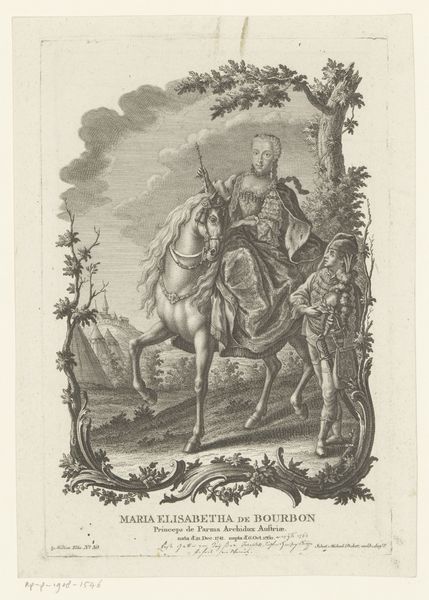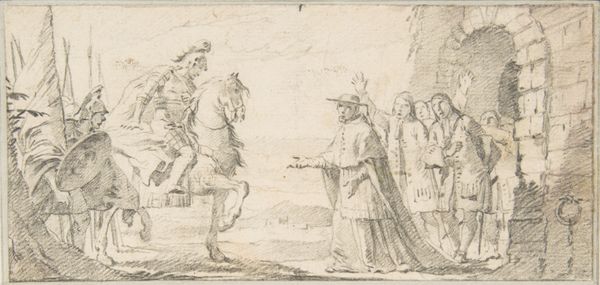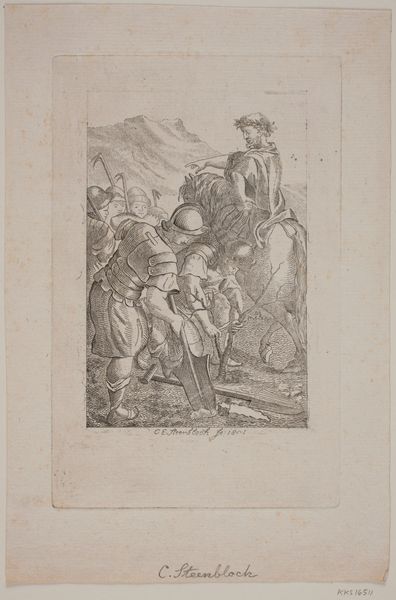
drawing, print, ink, engraving
#
drawing
#
narrative-art
# print
#
ink
#
history-painting
#
engraving
Dimensions: 270 mm (height) x 205 mm (width) (bladmaal)
Curator: Let's turn our attention to this 1885 drawing by Emil Villumsen titled, "Illustration til Holberg: 'Peder Paars'." It's a print made using ink and engraving, currently held at the SMK, Statens Museum for Kunst. Editor: My first impression? There's a strong theatricality to it, even a sense of exaggerated pomp. It feels as though it's consciously invoking the past while also poking fun at it. Curator: Absolutely. The illustration visualizes scenes from Ludvig Holberg's satirical epic poem "Peder Paars". Holberg, writing in the 18th century, was a master of social critique, holding up a mirror to Danish society, its elites, and its cultural norms. This drawing resonates with themes of power and class dynamics, all conveyed through an almost farcical lens. Editor: You can certainly feel that tension in the way Villumsen presents his figures. The man on horseback exudes authority with his baton, yet his slightly awkward pose disrupts any impression of absolute power. And then the bordering with cannons, fruits, helmets and other armaments—they build to this overall message that might connects also to opulence, fertility, and thus legacy. It gives insight into a culture that memorialized events and people to assert authority. Curator: Indeed. It is so intricately rendered. Every detail seems deliberate. It reflects a moment when historical narratives were tools to build national identity, which makes us ask about what histories were erased in this process. Whose stories get told and whose remain silenced? That frame itself can be viewed as a political construct. Editor: It also gives me food for thought on collective memories: Why certain narratives have staying power while others are relegated to obscurity? Visual symbols have so much importance, yet their intended and actual meanings are not static. It calls into question who and what shapes shared cultural values. Curator: Looking at the ways in which Villumsen uses line and texture to construct the scene opens new paths for interpretation. It reminds me that our understandings are inherently shaped by our positions, too. Editor: For me, observing the combination of classical elements within the illustration allows for reflection about history. It emphasizes that human experiences throughout eras often intersect. It’s all about layers of symbols building into cultural patterns of legacy.
Comments
No comments
Be the first to comment and join the conversation on the ultimate creative platform.
